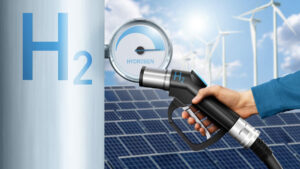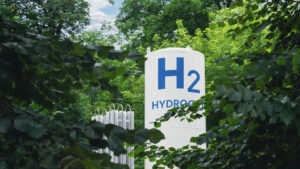Science just found a way to make hydrogen with less energy

Pic: Thana Prasongsin / Moment via Getty Images
Forget Hazers’ hydrogen hopes, toss away CSIRO’s ammonia application, because some guys up in Queensland may have hit on a way to make hydrogen on the cheap.
Of course, those ‘guys’ are a group of very smart scientists — men and women — led by Dr Joseph Shapter, pro-vice chancellor at University of Queensland, and the method is so cutting edge they’re still in the very, very early days or research.
It’s so new they haven’t yet put any dates yet on the research paper sent to Stockhead.
The basic theory is that a new kind of quantum nano-dot — a particle so small it’s made at the molecular level — made of black phosphorus has properties that can split water molecules into oxygen and hydrogen using less energy than existing processes.
How much less?
They’re not sure yet.
Shapter says they’re “about 5 per cent” of the way through the research process, but the work they’re starting to do is showing they can make the reaction happen at lower voltages, which means less energy is needed.
An energy solution for green hydrogen?
This breakthrough could be what “green hydrogen” needs.
Hydrogen is being hyped by industry and politicians as a possible export opportunity for Australia, as a way to decarbonise the transportation industry, and as a solution to gas shortages as companies like APA (ASX:APA) say they can mix gas and hydrogen in their pipelines to send to customers.
Currently the options for making hydrogen are electrolysis, an energy-intensive process using water called an oxygen evolution reaction, and steam methane reforming (SMR) where natural gas is split into its parts using a catalyst.
CSIRO’s under-development ammonia method is not for making hydrogen but storing it as a way to transport it.
- Subscribe to our daily newsletter
- Join our small cap Facebook group
- Follow us on Facebook or Twitter
ASX-listed Hazer (ASX:HZR) is developing a process that will use waste biogas and iron ore to make hydrogen and synthetic graphite.
The issue in Australia is hydrogen proponents are selling the industry as a way to stop being dependent on natural gas, which is expensive on the east coast and as an export is already spoken for as LNG.
They are also selling it as being a “green” export, meaning it can be carbon neutral or negative by being made out of renewable energy, but as yet there isn’t enough renewable energy in Australia to support that, as shown by numbers run by analysts at Jacobs and McKinsey.
Which means a less expensive way to make hydrogen may have legs if supporters really want the industry to take off in Australia.
Science = money
The Queensland researchers are looking at the oxygen evolution reaction, or OER, the energy-inefficient part of electrolysis which splits an H2O molecule.
In their paper Microwave-assisted synthesis of black phosphorus quantum dots: efficient electrocatalyst for oxygen evolution reaction, the Queensland team said they had found an OER catalyst compared well to “recently reported state-of-the-art electrocatalysts and also commercial catalysts such as [iridium and ruthenium]”.
Currently, OER catalysts with promising activity and stability are iridium and ruthenium which are very rare and expensive metals. Researchers elsewhere in the world are looking at using nickel and cobalt.
The Queenslanders are working with black phosphorene nano-dots created by a team led by Dr Christopher Gibson at Flinders University in Adelaide.
Gibson says they originally used microwave energy to split phosphorus into thin layers of phosphorene, similar to how carbon is turned into graphene sheets (this is currently being developed to make more efficient perovskite solar cells — an area Greatcell Solar (ASX:GSL) tried to pioneer but whose tech was too early stage for the market. They are currently in voluntary administration).
But a little longer in the microwave and the phosphorus turned into tiny particles rather than sheets.
The nano-dots were handed over to Queensland, who ran a proof-of-concept study into their use as an electrolysis catalyst.
They found that when compared to cobalt oxide the nano-dots performed slightly better.
But the real magic happened when both were mixed together: they worked as well as the state-of-the-art catalysts, and the rare expensive metals.
All of which paves the way to setting up a uniquely Australian hydrogen-making process.
UNLOCK INSIGHTS
Discover the untold stories of emerging ASX stocks.
Daily news and expert analysis, it's free to subscribe.
By proceeding, you confirm you understand that we handle personal information in accordance with our Privacy Policy.








